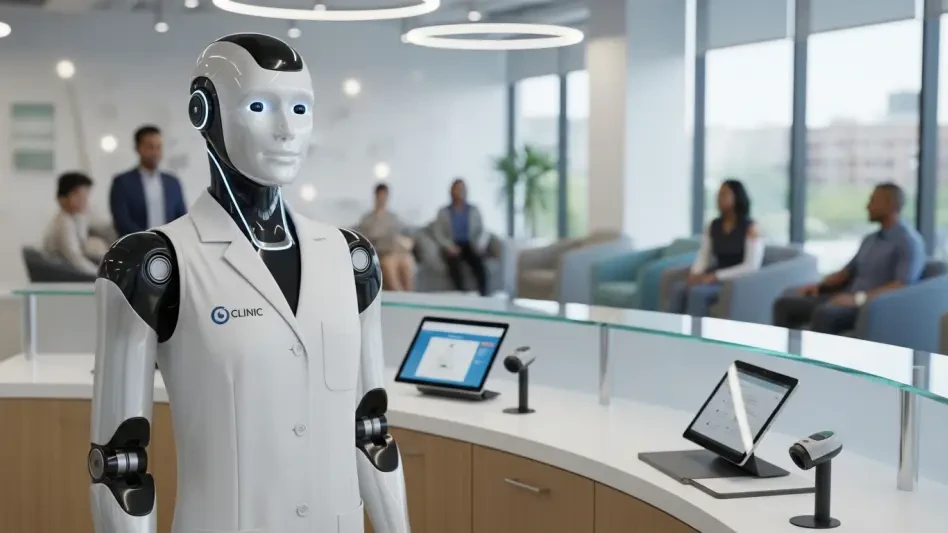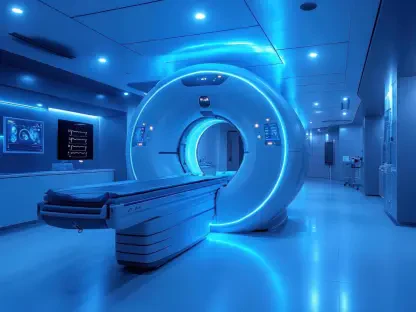The healthcare sector is undergoing a transformation, with technology advancing at a rapid pace. One of the standout innovations is the Clinical Ambient AI Platform, showcasing remarkable progress in digital documentation and workflow automation. Amidst increasing documentation demands on healthcare professionals, this artificial intelligence-driven platform emerges as a frontrunner, promising to simplify processes, reduce administrative burdens, and enhance patient care efficiencies.
Understanding Clinical Ambient AI
Clinical Ambient AI epitomizes the marriage between advanced technologies and healthcare needs, streamlining the interaction between clinicians and electronic health records (EHR). The platform operates on the principles of ambient intelligence, actively listening and recording physician-patient interactions to automate documentation processes. This AI-powered approach holds significant relevance in today’s technological landscape, where efficiency and precision in healthcare practices are increasingly prioritized.
Given the rise of complex clinical environments, ambient AI solutions integrate seamlessly into existing systems, representing a critical evolution in healthcare technology. It embodies a shift from traditional methods to intelligent, adaptive systems that are capable of enhancing everyday medical operations without imposing additional burdens on staff.
Core Features and Technology Components
Ambient Listening and Documentation Automation
Ambient listening is a cornerstone of the platform, offering a subtle yet profound shift in medical documentation. The technology listens without interruption, recording essential data and automatically populating it into patient records. This functionality not only improves documentation accuracy but also frees healthcare professionals from manual, time-consuming tasks, allowing them to focus more on direct patient care.
Specialty-Focused Chart Summaries
A pivotal feature of the system is its capability to generate specialty-focused chart summaries. Through sophisticated algorithms, the platform tailors summaries to specific medical disciplines, thereby enhancing clarity and relevance for practitioners. This feature solves the issue of generic, one-size-fits-all summaries by providing targeted documentation that caters to the diverse needs across medical specialties.
Recent Innovations and Trends
Innovation in clinical ambient AI has been marked by strides in refining voice recognition, natural language processing, and machine learning algorithms. As the technology matures, there is an evident trend toward more personalized and context-aware systems. This evolution is driven by industry demand for smarter solutions capable of understanding nuanced medical dialogues and providing actionable insights that improve clinical decision-making.
Simultaneously, industry behaviors are shifting towards greater acceptance and reliance on AI solutions. Healthcare providers are increasingly adopting these technologies, motivated by the need for efficiency and precision in handling complex data sets while minimizing errors and ensuring compliance.
Real-World Applications
The real-world impact of the Clinical Ambient AI Platform is profound, with applications spanning ambulatory clinics, emergency departments, and hospitals. One notable use case includes its deployment at prominent health systems such as Cleveland Clinic and UCSF Health, where it has significantly enhanced documentation accuracy and operational workflow. These implementations underscore the platform’s capacity to transform traditional healthcare workflows into more dynamic, efficient systems.
In addition to conventional healthcare settings, unique applications have emerged across specialized care services, where the platform’s customization capabilities are particularly beneficial. This versatility ensures that the technology meets diverse healthcare needs, driving widespread adoption and positive outcomes.
Challenges and Limitations
Despite its advantages, the Clinical Ambient AI Platform faces several challenges. One primary concern is the implementation within disparate EHR systems, where integration barriers may arise. Moreover, regulatory issues linked to patient privacy and data security present formidable obstacles that must be addressed to gain broad trust and acceptance.
Furthermore, technical hurdles related to processing nuanced medical language and achieving flawless recognition accuracy remain. Ongoing development efforts focus on overcoming these limitations, aiming to bolster the platform’s functionality while ensuring compliance with stringent healthcare regulations.
Future Outlook
As the platform continues to evolve, it is expected to integrate deeper into healthcare systems. Future developments will likely focus on optimizing AI models that offer even greater accuracy and efficiency. Additionally, potential breakthroughs in data interoperability and patient interaction could pave the way for more holistic patient management solutions.
Long-term, Clinical Ambient AI holds the promise of reshaping the healthcare landscape, enabling more patient-centric approaches and creating opportunities for advancements in diagnostics and treatment. The ongoing refinement of this technology hints at a future where healthcare processes are not only more efficient but also more responsive to patient needs.
Conclusion and Overall Assessment
The Clinical Ambient AI Platform, with its emphasis on automation and precision, has established itself as a transformative force in healthcare technology. The platform demonstrates considerable potential in reducing the administrative burdens faced by clinicians and healthcare staff. Although it encounters challenges in terms of integration and regulatory compliance, its ongoing development aims to address these issues. As such, the technology is poised to play a vital role in shaping efficient, patient-centric healthcare environments in the future. The AI-driven innovations in documentation and workflow management have propelled the industry toward a new era of operational excellence, setting the stage for continued growth and adoption.









